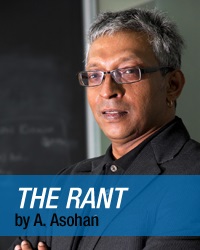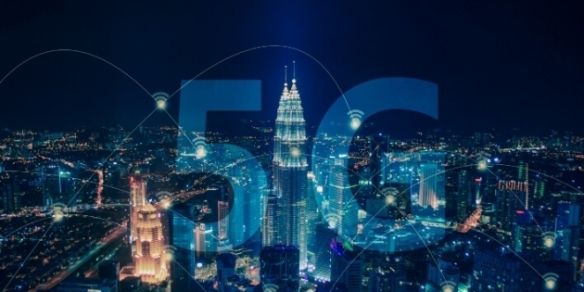Week in Review: Malaysia a second-tier hub, Singapore first?
By A. Asohan May 1, 2015
- Both countries have selling points and unique advantages
- But as Singapore moves ahead, what role can Malaysia play?
 MALAYSIA and Singapore are close cultural cousins, at one time part of a single country, now separated by the Causeway and a history that has been acrimonious at times. And yes, both have been ruled by the same political parties since their founding.
MALAYSIA and Singapore are close cultural cousins, at one time part of a single country, now separated by the Causeway and a history that has been acrimonious at times. And yes, both have been ruled by the same political parties since their founding.
In just about every other aspect, they are worlds apart. One of the most important differences is that Singapore is a developed nation, while Malaysia is a developing one.
The playing field is not a fair one, but let’s face it: We are competitors.
Nowhere is this more apparent than in the startup ecosystem. The governments of both countries have been very supportive of entrepreneurship, but Singapore has just about arrived when it comes to being a global startup hub, while Malaysia is still struggling to become a regional one.
Singapore had many advantages, of course. It had a head-start on this whole startup business, a clean and efficient government that is the envy of even many first-worlders, and as a developed nation, the infrastructure and access to capital that are so important to building startups that can take on global markets.
Malaysia has made valiant efforts on this front, especially in recent years, but will probably never be able to match its southern neighbour. Malaysia is always going to lose out, in some ways.
Of course, many smart people in both countries will tell you that this needn’t be a zero-sum game, and startups across the border can leverage the strengths of the other country.
Malaysia has many compelling value-propositions it can offer startups and entrepreneurs from all over South-East Asia: A fairly-educated and relatively English-speaking workforce in a market that speaks Malay and various Indian and Chinese dialects.
As a launchpad, Malaysia is pretty good value for the money. After all, that’s why most of the region’s most successful and largest Internet companies had their beginnings here: MOL Global, the Catcha Group and many of its portfolio companies, JobStreet, and others.
But in cases like Catcha’s companies, they could only grow so much before they had to venture abroad to get access to the capital they needed to properly scale. In these cases, that meant listing on the Australian Securities Exchange (ASX).
Now Singapore has greater access to capital, with many programmes that its government has been building over the last few years coming to fruition. That’s why it can dangle the carrot of venture capital to get Malaysian successes like GrabTaxi to incorporate in Singapore, which led to the company getting access to even more capital.
Singapore – itself a multicultural and multilingual society – is going to carry on luring some of the best and brightest, and Malaysia will be left with only one singular advantage: Lower costs for relatively good talent and infrastructure.
True, some of Malaysia’s best and brightest still remain within its borders, while retaining a global outlook – but for how long? How long can they keep looking at startups similar to theirs moving ahead with access to capital and the kind of world-class foreign and domestic talent Singapore has, not just within the startup space, but also in its universities?
How do we ensure that it is not a zero-sum game, which means both countries benefit? Well, perhaps it means Malaysia recognising that it can only be, at best, a ‘second-tier’ startup hub. This is not necessarily a bad thing: It’s the old 1970-80s Avis rallying cry against its massive rental-car competitor Hertz: When you’re No 2, you try harder.
While it may not have intended it as such, this is one role that can be played by the Malaysian Global Centre for Innovation and Creativity’s (MaGIC) Asean-focused MaGIC Accelerator Programme (MAP) it officially launched in March: Get the startups and entrepreneurs that Singapore is not paying attention to, and get them to look at Malaysia as the place to be.
And this is where I think MaGIC can also expand its MAP remit: There are two prongs, the first is for all startups based in any Asean country, and the second is only for Malaysian social enterprises.
Now, as it stands, since this is all Malaysian tax-payer money, it makes sense that the social enterprise component be reserved for companies that are working on social and community issues in the country – but I think it’s worth the while for the next batch to be opened up to all social enterprises in Asean.
Let Singapore have the sexy Silicon Valley types, while Malaysia establishes itself as a regional, and perhaps even global, social startup hub: Those companies making a direct, in-your-face, difference to societies and communities.
This does not mean throwing in the towel when it comes to the greater startup ecosystem, but about Malaysia focusing its efforts and intensifying its lenses on areas where it can stand up, and stand out.
Would that be viable? Discuss ….
Editor’s Picks:
Cradle co-investment move hits US$16mil mark with new investors
Accelerator avalanche and Singapore’s startup hub issue
Regulators need to look at impact of digital content, streaming
Singapore’s Smart Nation moves into prototyping phase
Monetisation currently takes a backseat for Tripda
Why AWS' revenue revelation is significant
Businesses still figuring out their cloud strategy: NetApp CTO
Previous Instalments:
Week in Review: The vision is just the first step
Week in Review: Protection, predictions and paranoia
Week in Review: It’s R&D to us Asians, thank you
Week in Review: Abuses of power, and leadership changes
Week in Review: Asean startups, Malaysian companies want you
For more technology news and the latest updates, follow us on Twitter, LinkedIn or Like us on Facebook.


